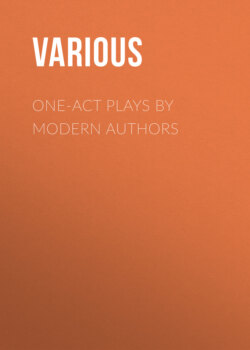Читать книгу One-Act Plays by Modern Authors - Various - Страница 14
На сайте Литреса книга снята с продажи.
ОглавлениеInterior of the Beechwood Theatre.
Exterior of the Beechwood Theatre.
Two school theatres designed especially for the purpose of fostering in the schools to which they are attached an interest in the drama are the Garden Theatre of the high school at Montclair, New Jersey, and the Beechwood Theatre in the private school at Scarborough-on-Hudson, New York, built by Frank A. Vanderlip. At Montclair the present high school building was completed in 1914. To the northeast of the building at that time was a ravine which afforded a natural amphitheatre. The site was perfect, and a gift from a public-spirited citizen, Mrs. Henry Lang, made it possible to create on this spot a very artistic and beautiful place for outdoor performances, either plays or pageants.
On the slope nearest the building are semi-circular rows of concrete seats accommodating about fifteen hundred people. A brook spanned by two arched bridges separates the audience from the stage. Back of the turf stage is a graveled stage slightly raised and reached by two flights of steps. The pergola and trees make a beautiful background. The house in the rear is a part of the plant and is used for dressing and make-up.
The Beechwood Theatre within the school has a proscenium opening of twenty-seven feet and a stage depth, back to the plaster horizon, of the same dimensions. There are two complete sets of drapery, one of coarse écru linen and one of blue velvet; there is also a stock drawing-room set of thirty pieces. Back of the stage are ten dressing-rooms. The lighting arrangements are extraordinarily complete: the theatre has a standard electrical equipment of footlights and borders and a switchboard of the best type to which has recently been added the latest lighting devices, consisting of an X-ray border, the end section of which is on a separate dimmer, a thousand-watt centre floodlight, six five-hundred watt-spotlights, each on separate dimmers, in the false proscenium or tormentor,[22] and a line of one-thousand-watt floodlights for lighting the plaster sky. All of this recently added equipment is controlled from a separate portable switchboard.
Though this plant was built primarily for the school, it is used also by the Beechwood Players, a Little Theatre organization, and by other community clubs which comprise an orchestra, a chorus, a group interested in the fine arts, and a poetry circle. Mr. Vanderlip looks forward to the development of a school of the arts of the theatre from the nucleus of the Beechwood community clubs. With this idea in mind he has just built a workshop for the Beechwood Players in a separate building. It contains power woodworking machines, and rooms for painting scenery and for the costume department, the latter containing power sewing machines.
There is no doubt but that these two schools have unique facilities for developing an interest in the acted drama. But artistic results have often been secured in the school theatre with equipment falling far short of the ideal standards achieved at Montclair and at Scarborough. Other less fortunate schools are, moreover, at no particular disadvantage when it comes to the class-room study of the drama for which this book is primarily planned, this work being the first step in the direction of a more intelligent attitude toward modern plays and modern theatres. A class-room reading of modern plays without any accessories, as Shakespeare is often read from the seats and the aisles, is one of the most practical methods of speech and voice improvement. Louis Calvert, the eminent actor, speaking of this kind of training says: "After all it is one of the simplest things in the world to learn to speak correctly, to take thought and begin and end each word properly. … A little attention to one's everyday conversation will often work wonders. If one schools himself for a while to speak a little more slowly, and to give each syllable its due, it is surprising how naturally and rapidly his speech will clarify. If we take care of the consonants, the vowels will take care of themselves."
Ravine where the Garden Theatre was built.
The Garden Theatre.
At the present time, then, the theatre in the schools means a variety of things. It means first and foremost, as suggested by the latest college entrance requirements, the study of modern plays, side by side with the classics. It means also the improvement of English speech, through the interpretation and the reading aloud of the text. It means a study of the new art of the theatre such as the present book suggests. It means often the presentation of plays before outside audiences and the consequent strengthening of the ties that should exist between the school and the community. It may mean the co-operation of several departments of the school in the production; and, in this case, it usually results in the establishment of some kind of a workshop. And finally, in certain favored schools, it means the erection of model Little Theatres. It seems fair to suppose that this newly aroused interest in modern drama and in modern methods of production in the schools will have far-reaching results.
